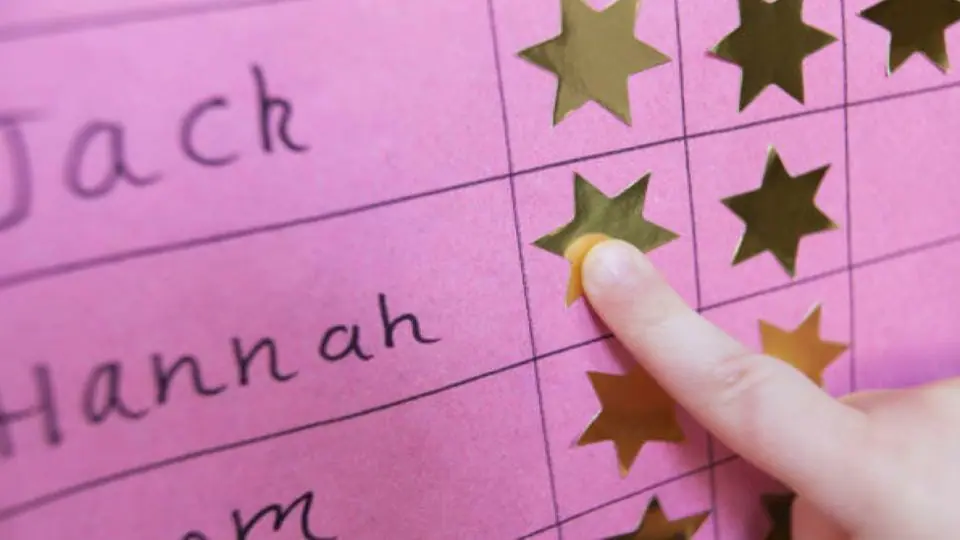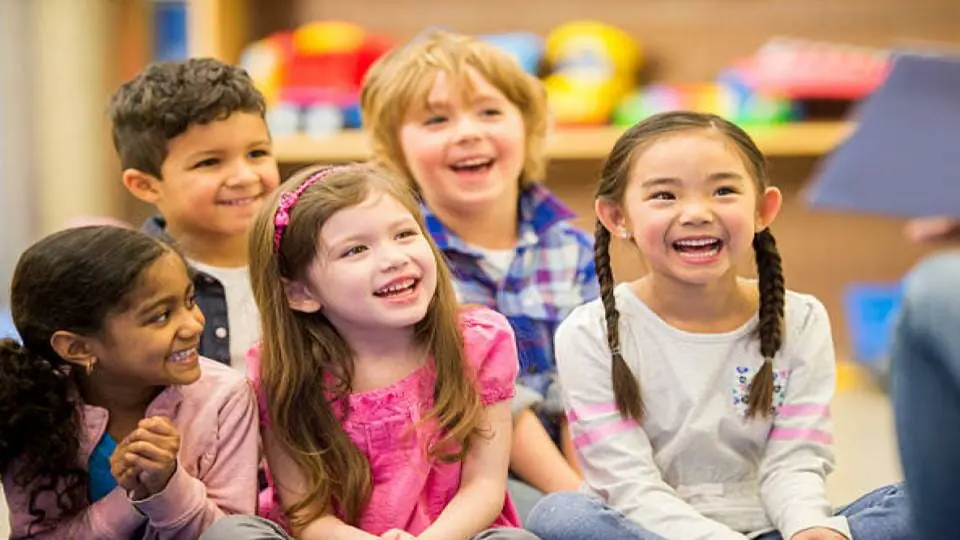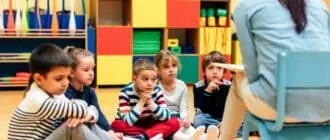Do you still remember your first day experiences as a student? I do. I remember being anxious, excited, wide-eyed, and self-conscious all at the same time. I don’t remember the details of the exact first week of school activities.
But…
I do remember the teachers who have made memorable introductions (including one who started the lesson with a quiz!), the friends I’ve made in those first few weeks, and the sound of laughter in the room because of one hilarious school activity.
So how can you replicate these fun, unforgettable experiences for your own class?
The Power of First Impressions
At the beginning of the school year, activities should aim to promote a friendly learning environment for students whether you’re teaching elementary school, middle school, or high school.
During the first week, students are all jittery and they must have 200 things going through their heads like, “What’s this new grade like? Are the assignments easy or difficult? Do I like this teacher? Do I measure up to my classmates?”
According to Teach for America, these glances and interactions in the first week can have an impact on their school performance throughout the school year and can even shape the mindsets that they will carry for life.
Fun Activities That Will Smash Your First Week Goals
If you’re looking for creative ideas to make the first week of school games enjoyable yet learning-filled for your learners, here are some that will surely leave lasting, positive impressions.
1. The Best Reward
Start by writing the words “symbolic, token, praise, activity” on the board. Explain to the class that these are types of rewards.

- Symbolic- these are rewards in the form of symbolic objects that represent excellence such as a gold star, a trophy, or a learner’s photograph on a bulletin board poster.
- Tokens- these are tangible rewards of value or a form of currency that can be redeemed e.g. school supplies, vouchers that can be redeemed for extra free time or exemption from a recitation or quiz.
- Praise- this is the most common type of reward. It is verbally complimenting a learner about a specific positive behavior.
- Activity- these are intangible rewards such as being a leader during an activity or getting to facilitate a game during class.
On a sheet of paper, have students write their names and rank the rewards according to their preferences. After this, ask for volunteers to explain their rankings. Make a record of the students’ responses so you’ll know how to reward and best encourage each student.
If you still have time, divide the class into groups and ask them to reflect on how you can best encourage them to do their best in class and motivate them when they are in a slump. Ask them to make a consolidated list that you can keep and refer to throughout the school year.
2. I Belong Here

This activity will help learners see school as a welcoming place.
Ask students to bring a solo picture of themselves. Then ask them to paste them on A6 size white paper, write their names on it, and personalize their personal posters using crayons and markers.
For older learners, ask them to fill this paper with unique trivia about themselves (e.g. weirdest food they’ve eaten, their favorite song of all time, etc.)
After they’re done, ask them to pin these posters on a bulletin board. Seeing their physical pictures posted on the classroom wall will help induce feelings of belongingness in their new environment.
3. Quick Classroom Inventory
This is the quickest of all the 1st week of school activities on this list so do this if you’re pressed for time.

Have the students rise up or raise their hands in response to both funny and serious questions. Questions can also be lesson-related for added learning value.
Here are some sample questions you can try:
- Do you like (insert name of the subject matter you are teaching)?
- Do you sleep with the lights on?
- Are you afraid of frogs?
- Can you touch your tongue to your nose?
- Have you ever eaten a bug?
- Have you slept under your bed?
- Are you smarter than your teacher?
- Have you been on an airplane?
- Have you played in the snow?
- Have you been ice skating?
- Have you ever picked apples off a tree?
4. Two Truths And a Lie
Like it or not, we have a big influence on our students’ perception of school. Our students are constantly looking at our cues and our body language. In the first week, they are eager to know if we are simply the strict enforcer of classroom rules or someone they can relate to and trust.

Prepare three pictures and statements that describe who you are as a person. Two of these statements should be real facts about you and one should be a lie.
Ask students to guess which of the statements is a lie through voting. Reveal the answer and expound on your true statements further.
Divide the class into small groups and ask the students to do the same task. Ask group representatives to report to the class what unique things they have learned about their classmates.
5. All About Me Bag
Get students talking about their likes and dislikes with this really fun activity.

As homework, ask students to choose three items that are important to them and put them in a bag. Have them present these items to the class and explain why they matter so much to them.
6. My Numbers Name
This is perhaps the most challenging of all the 1st week of school activities I’ve listed so far. Work out the value of your name in numbers (A=1, B=2, C=3, and so on). For example, my name Emily is 5-13-9-12-25. Have the students guess what your name is, based on these numbers.
Ask students to convert their names into numbers and ask them to stand up and roam around asking people what their numbers are and then converting them into letters. They should write their correct guesses on a sheet of paper.
The one who guesses the most students’ names within a set period wins.
7. My Signature Action
Divide the class into groups and have them stand in a circle with enough room for people to move their hands and legs in between.
Explain to the class that they will have to introduce themselves by stating their first names and then making an action that goes with it. The people in the group should then say the name and imitate the action three times.
For example, a student can do a shadow jump shot if they like basketball, do a dance move if they like dancing or pretend to sing and hold a mic if they like singing. Set the rule that the actions shouldn’t be offensive to anyone in the group.
Model the activity first and have the people in the groups say your name and do your action three times.
You can also turn up the difficulty by making this into a memory game. Require the groups to repeat everyone’s name and action from the beginning as each student adds their action.
8. Let’s Play Throw and Catch
This is an ideal school activity for the first few weeks, especially for students who already know each other but may need some practice remembering each other’s names.
This is great for fostering classroom community and team building.
Tell the class that for this game, they would have to focus and pay attention to their classmates. Have them stand in a circle with enough room in between to move their hands.
Tell the group that they need to play throw and catch by first catching the attention of their classmate and then saying their name.
The thrower must first catch a person’s gaze and then say “Here you go, (student’s name)” before throwing the ball. The catcher should then say, “Thank you, (student’s name).” It’s important to remind the students to first make sure the other person is ready before throwing to avoid any accidents.
Each student should throw the ball to someone who hasn’t received it yet. Do this faster and faster until students memorize each other’s names.
After the activity, ask the students to reflect on the lessons they’ve learned. What will happen if someone is distracted during a group task? What is the importance of being attuned to one another during an activity? How can they apply these learnings in other situations?
9. Groups and Lines
You won’t ever regret adding this to your fun first week of school activities because this one is genuinely so much fun.
This will get your students moving and talking while exploring what they have in common with their classmates.
Explain to them that they would have to organize themselves in a line or in groups based on your prompts. Here are some prompts you can try:
- Gather with those who have the same favorite food as you.
- Gather with those who have the same birth month as you.
- Line up in alphabetical order of your mothers’ first names.
- Line up in alphabetical order of your nicknames at home.
- Group yourselves based on your favorite movie genre.
- Group yourselves based on the kind of pets you own.
10. Classroom Scavenger Hunt
Learners thrive in a safe and organized learning environment. That’s why it’s also important to establish boundaries and routines by including them in your fun first week of school activities.
With some creativity, you can have students practice these routines as an exciting part of their first week in class.
First, hide clues and objects around the room that are related to the classroom rules that will be discussed after the activity. Make sure the clues contain instructions for what to do next so they can complete the tasks in order.
Divide the class into groups and ask the groups to search for valuable clues that you’ve hidden around the room. Assign their first task to jump-start the hunt. Here are some examples:
- Get one workbook from the place where you are supposed to store them. Clue: It is next to the bulletin board.
- What should you do when you want to speak during a classroom discussion? Find the answer in a blue envelope under one of the seats.
- Where should you store your bags? Find the answer inside a red envelope next to the window.
- Chant what you have to do twice when you need to leave the room during class. Find the answer behind the door.
The team that completes the hunt first, wins. By the end of the activity, they will have walked through all of the rules they needed to know and answered some questions along the way. Ask them to summarize the rules after the activity.
You’ll be surprised how students are more likely to remember your expectations when they’ve had a good time while learning them.
11. Talk to the Hand
The first week is not just a crucial time for establishing a school routine but is also the best time to assess your learners’ prior knowledge of the subject matter.
This is a super simple way of assessing prior knowledge, so make sure to include this in your first week of school activities.
Ask the students to trace their hands on a sheet of paper. Instruct them to summarize what they know about a certain topic in the palm of their drawings. Then write five facts or vocabulary words related to the topic on the fingers.
The result of this activity will help you adjust the difficulty of your future lessons accordingly or decide whether you should spend more or less time explaining a topic based on the level of your learners’ prior knowledge.
Fun Fact: You could also use smartboards to make your first week of class memorable as well. Read my post about this technology: Smartboard Games – Making Kids Learn While Having Fun.
Jump In: If you don’t wish to use smartboards but instead focus on traditional classroom activities, then you should try indoor recess ideas that will surely make your 1st week of school a blast! Read about them here — Indoor Recess Ideas: 47 Fun Break Time Activities For Kids.
——————————
Related Questions
How much class time should I spend on these activities?
Strive to spend only 10-15 minutes on these activities and then move on to the lesson proper.
How can I best introduce myself to the class?
Use the activities “2 Truths and a Lie” or “All About Me Bag” to effectively introduce yourself in unique ways.
What if students are hesitant to participate?
Start with quick, easy activities like “The Quick Classroom Inventory” or “The Best Reward” on the first day and progress to more active games in the next days to ease hesitant students into participating.
Final Thoughts
As a final note, remember that all your first week of school activities should smash your lesson goals. These activities should help you orchestrate positive first impressions, introduce yourself effectively, and clarify learning objectives and expectations.
They should also help students learn more about each other, set the tone for the course, help you gauge your students’ prior knowledge and motivation, and excite students for what’s to come for them.
Make reaching for these goals as enjoyable as can be and you’re on the right track for an amazing, unforgettable school year.
Last Updated on August 1, 2022 by Emily
- Facebook9
- Twitter21
- Pinterest67
- 97shares




